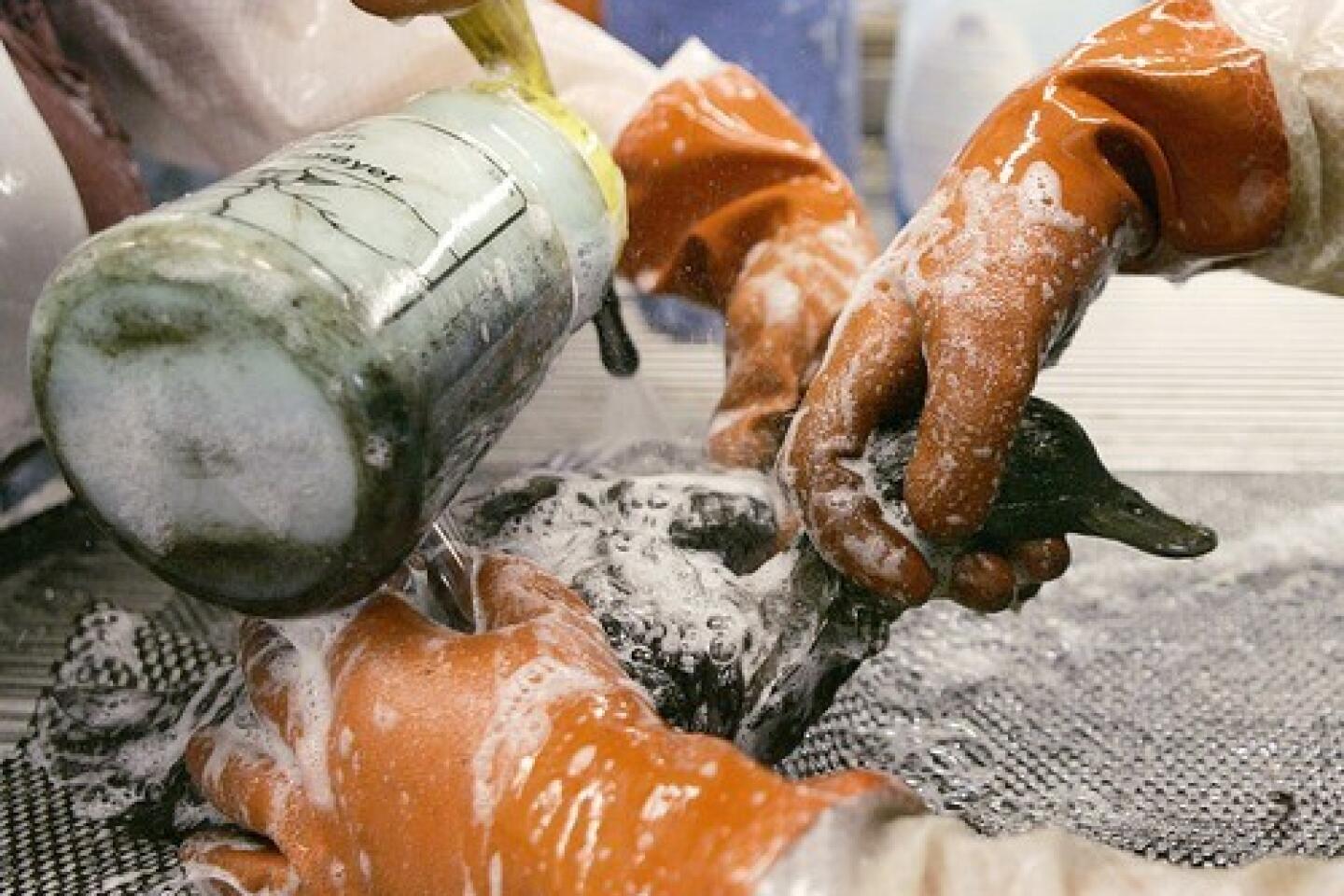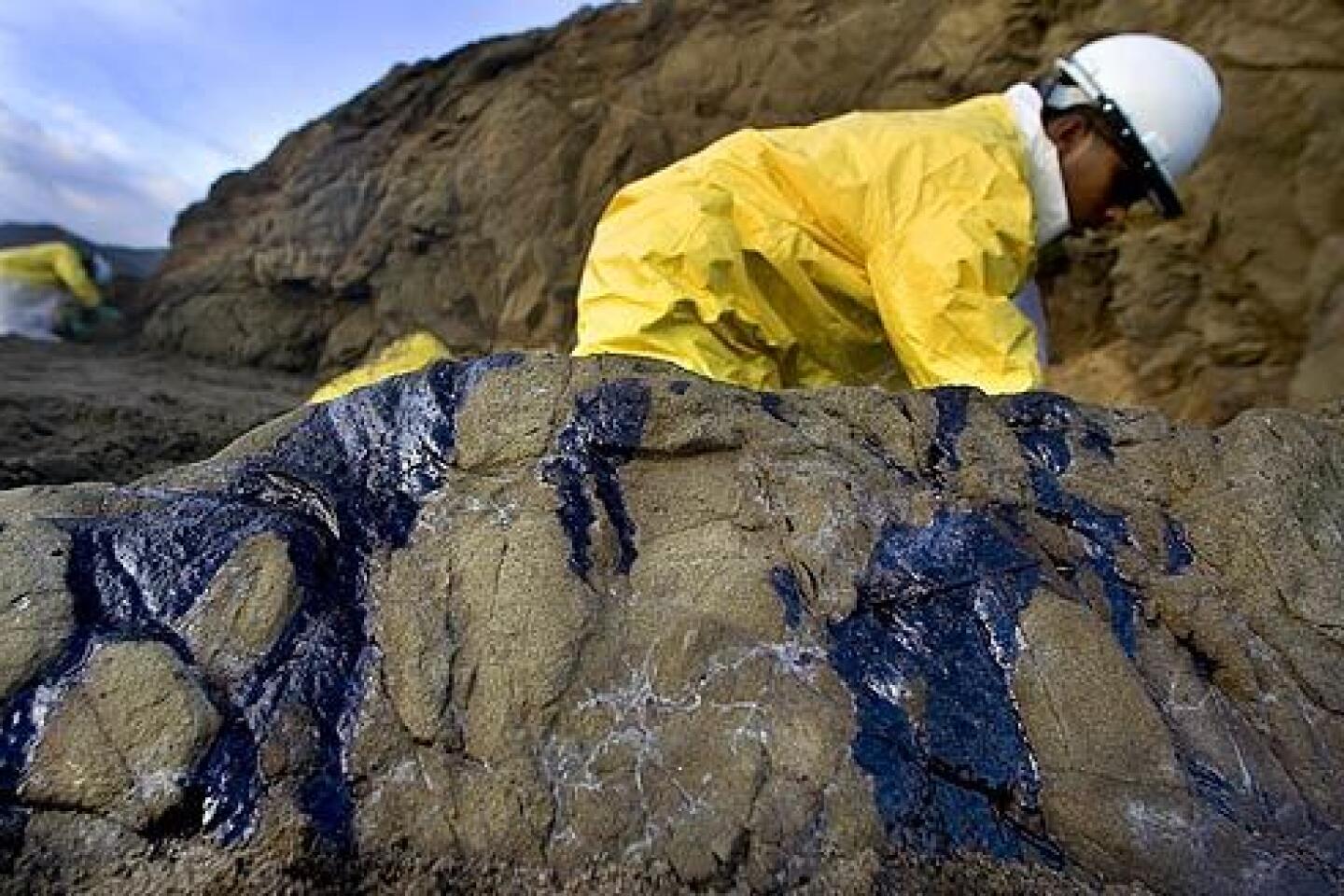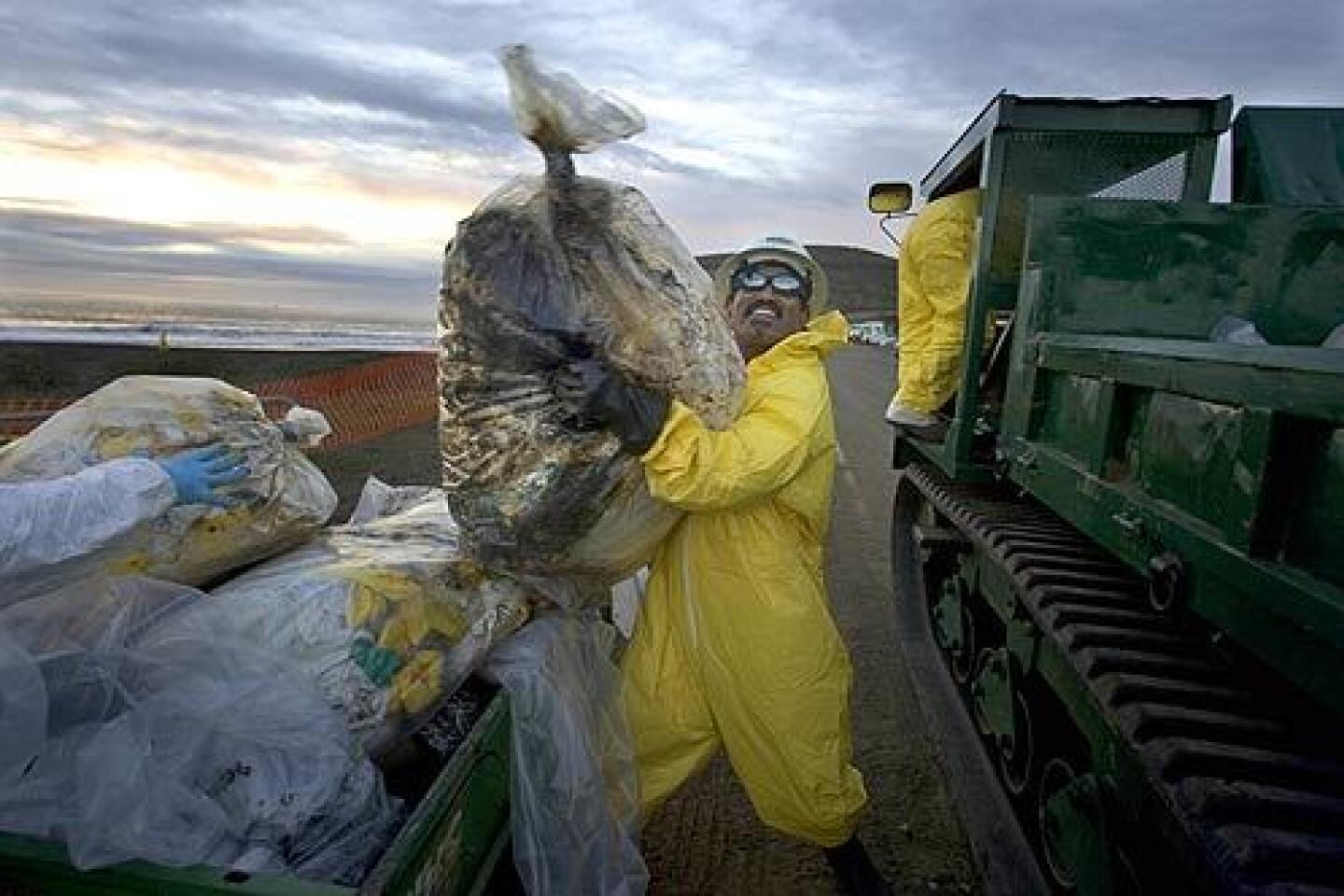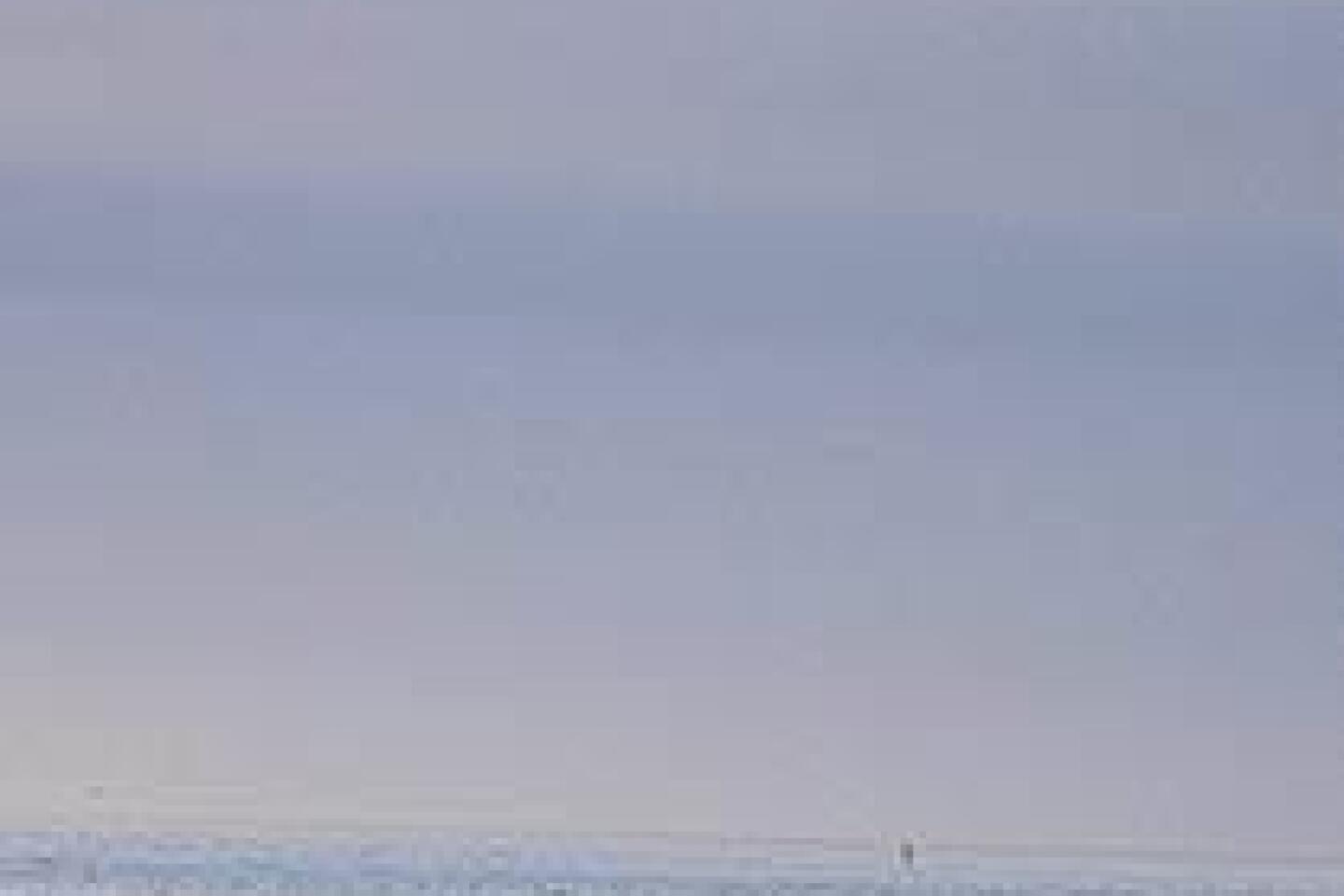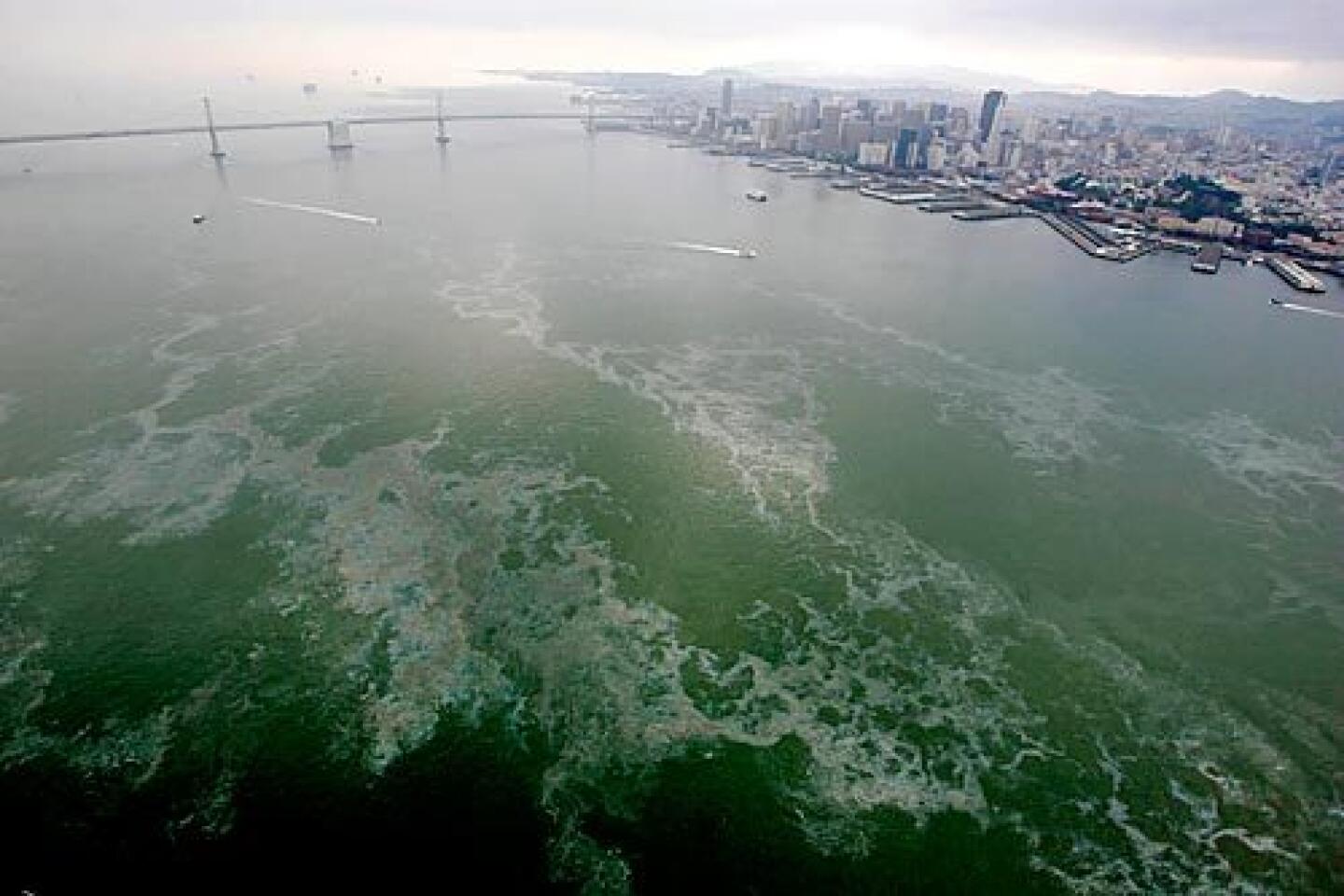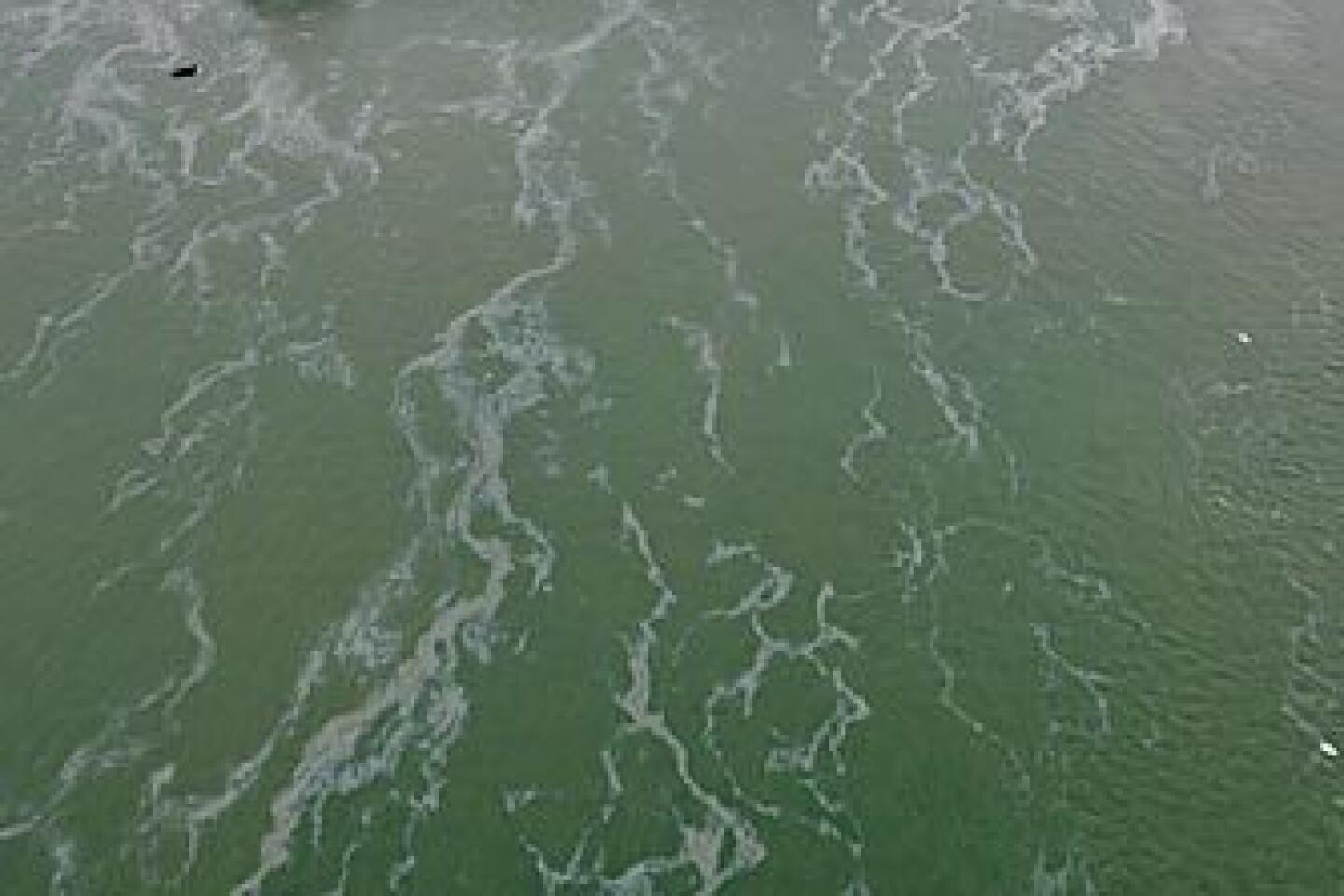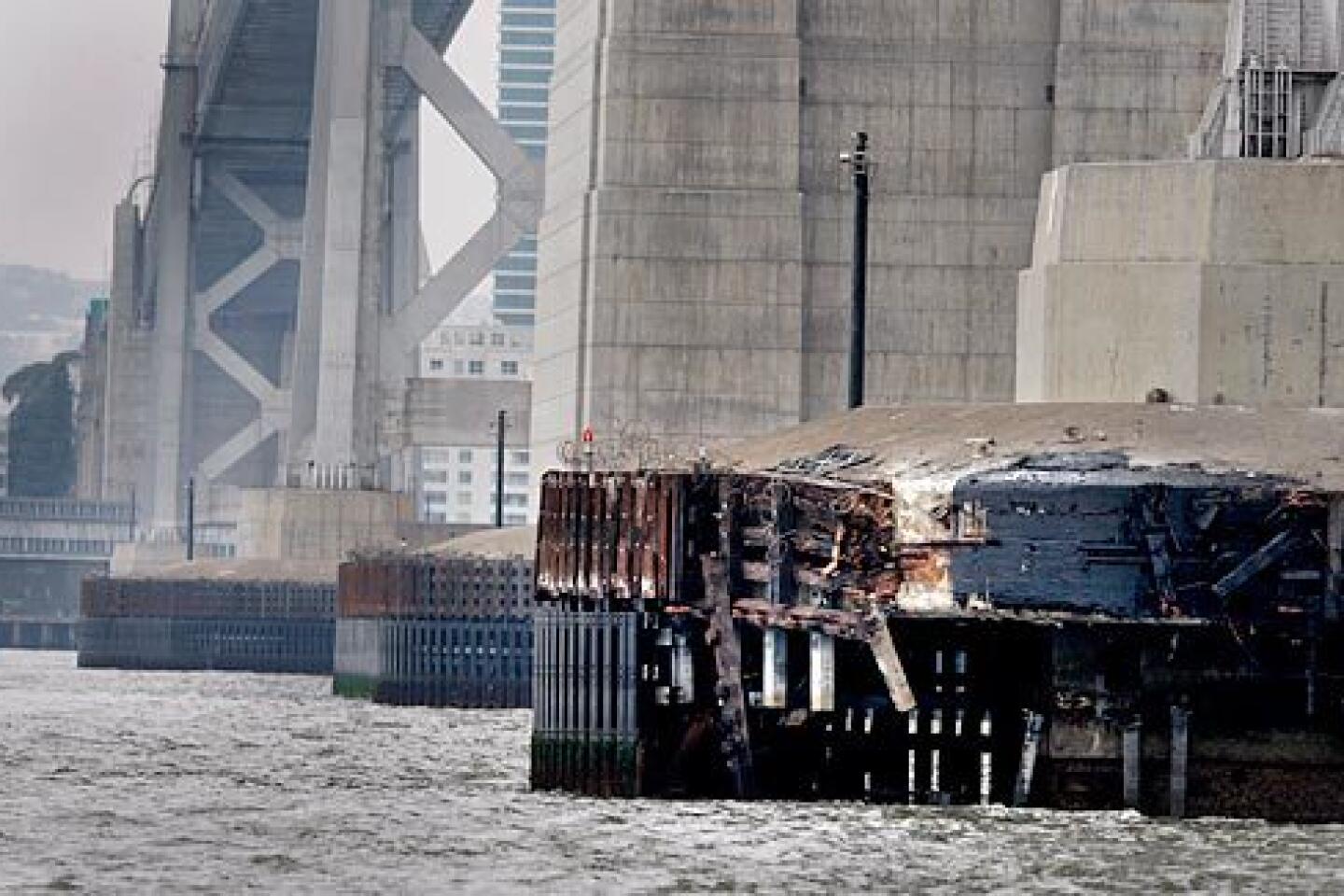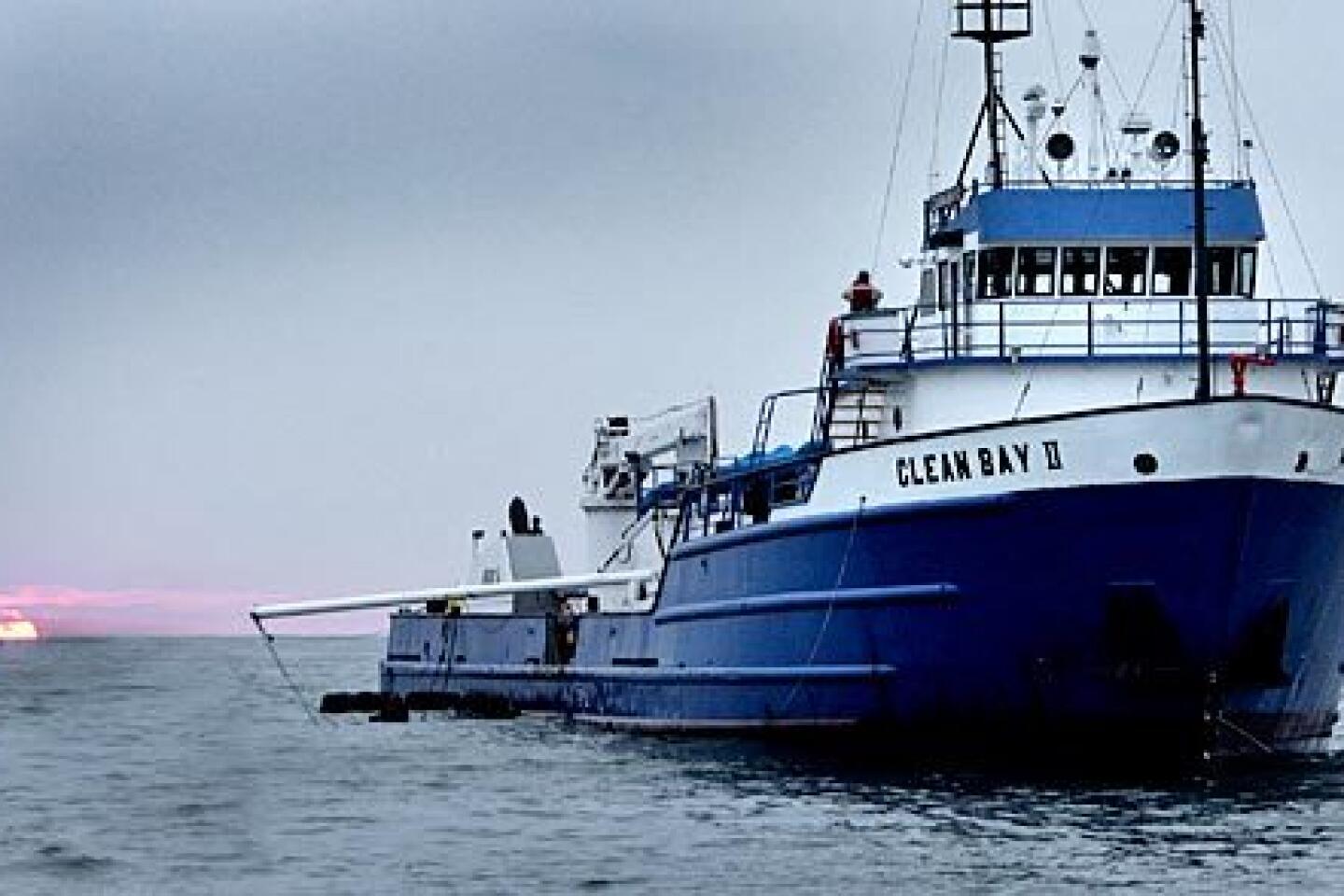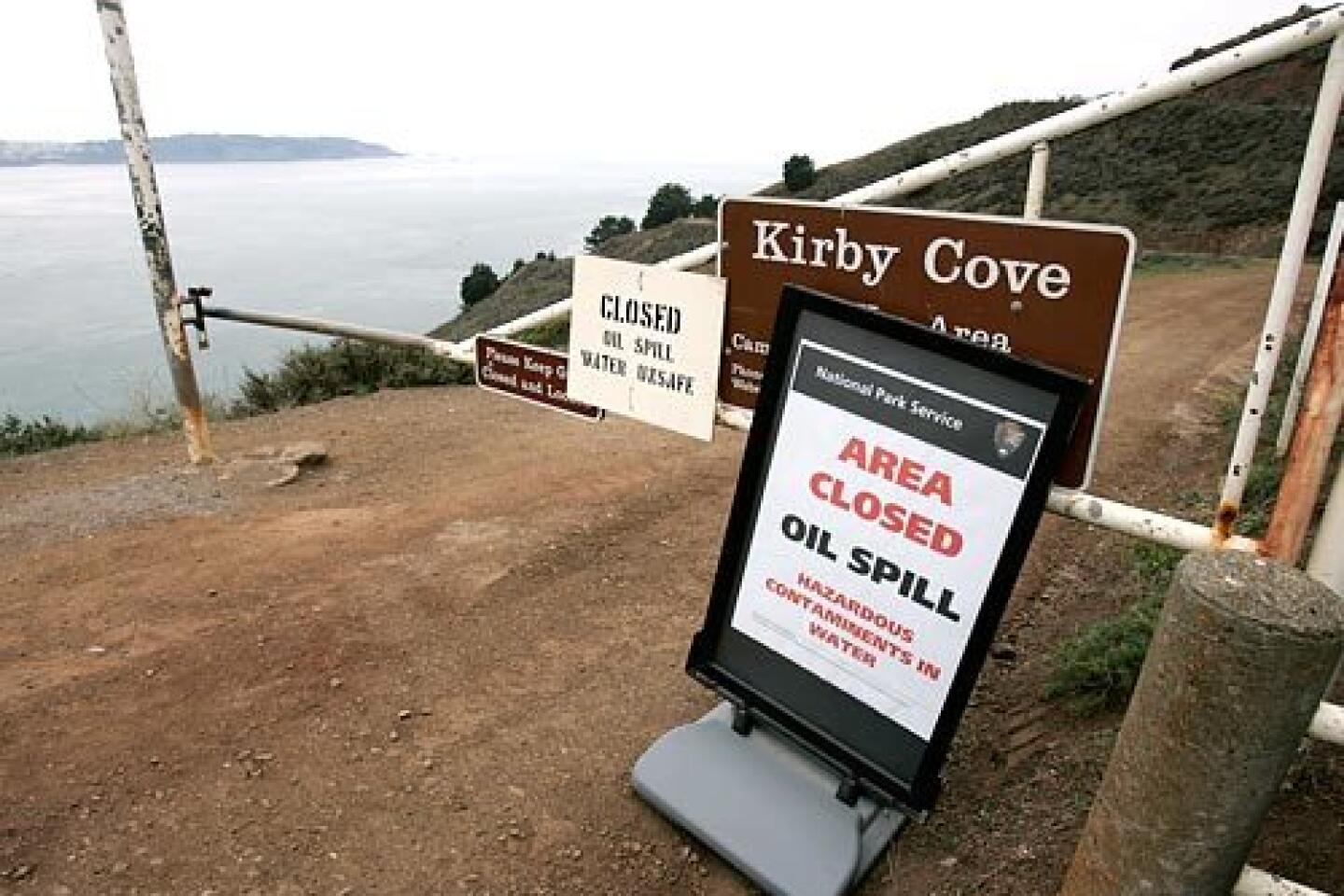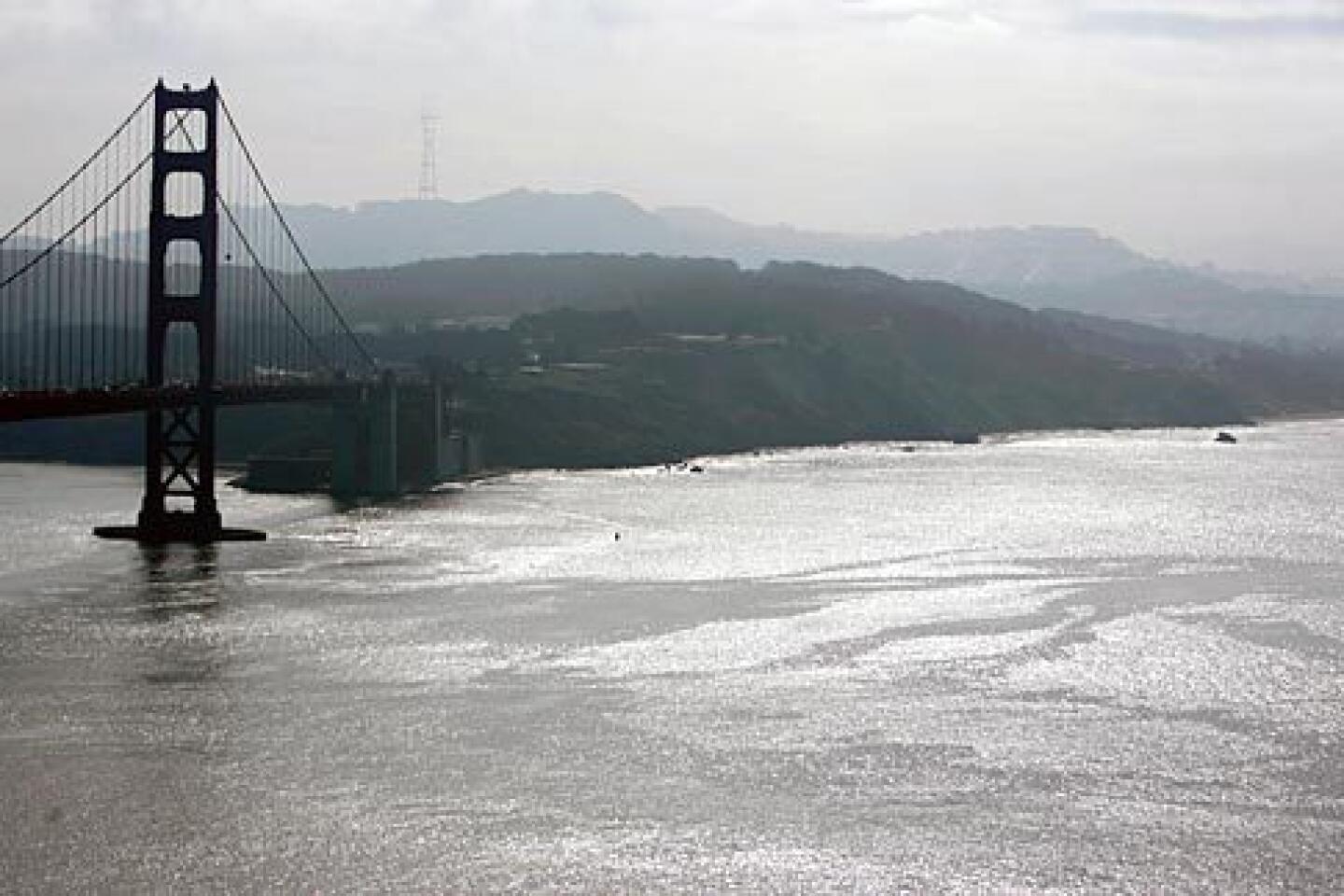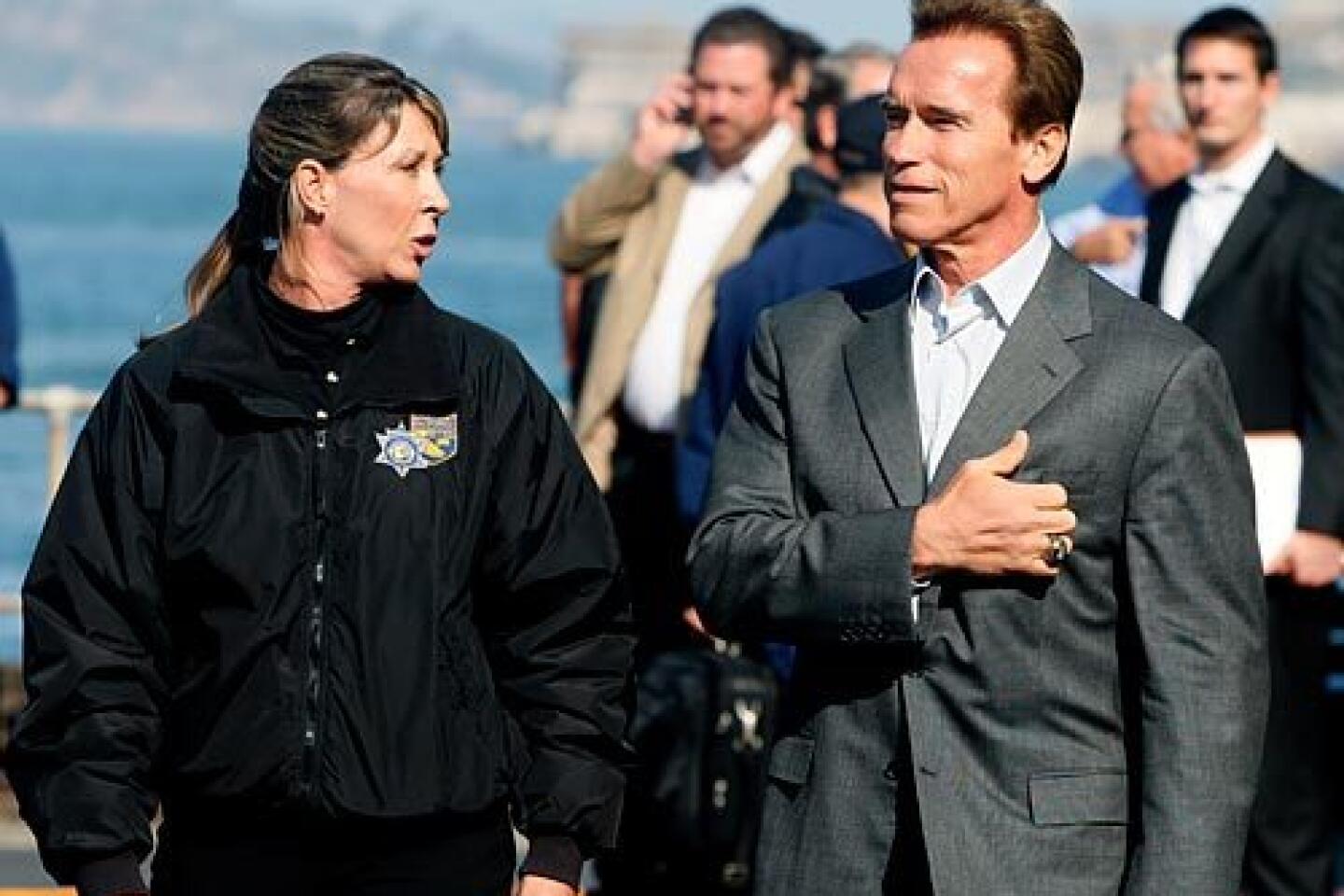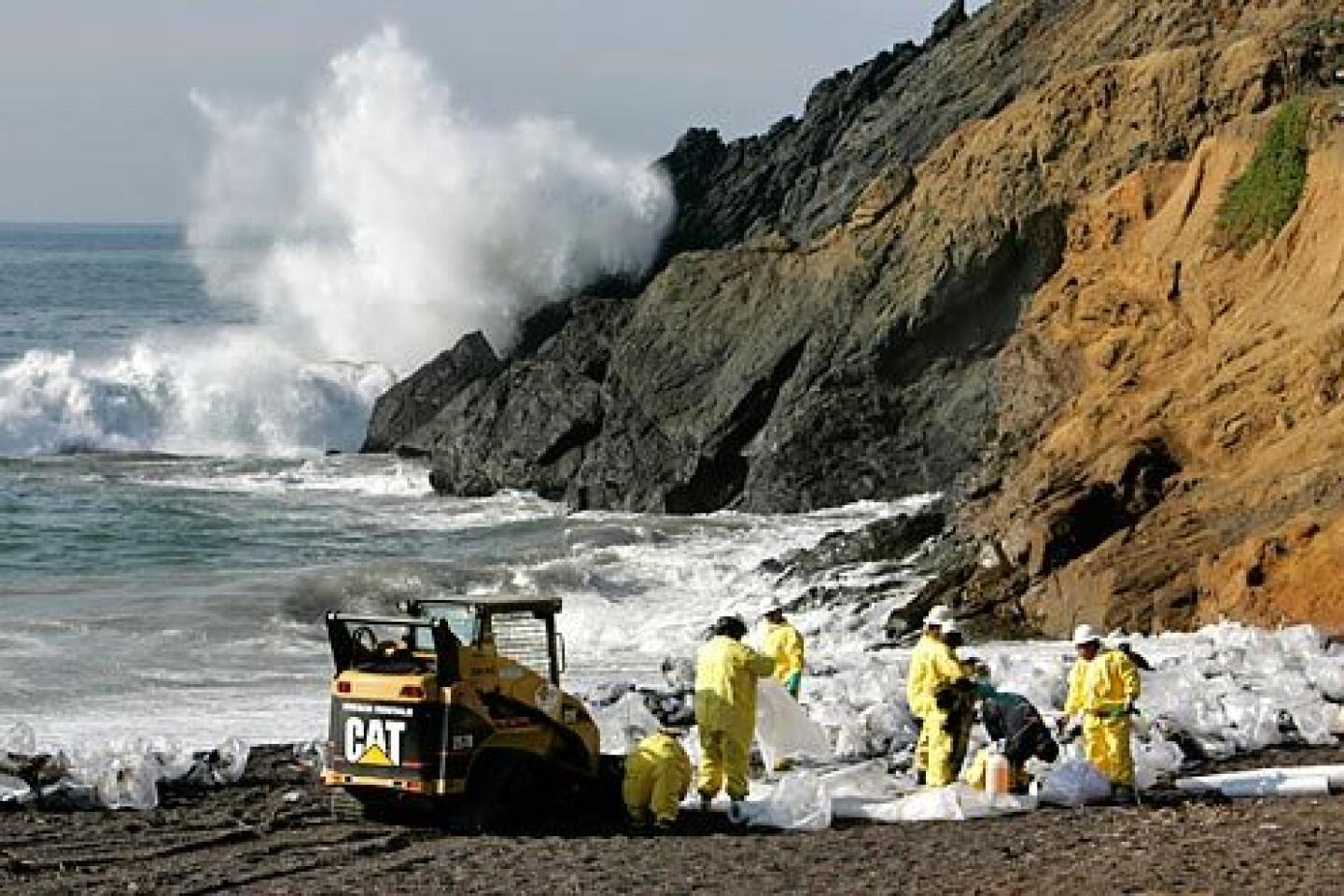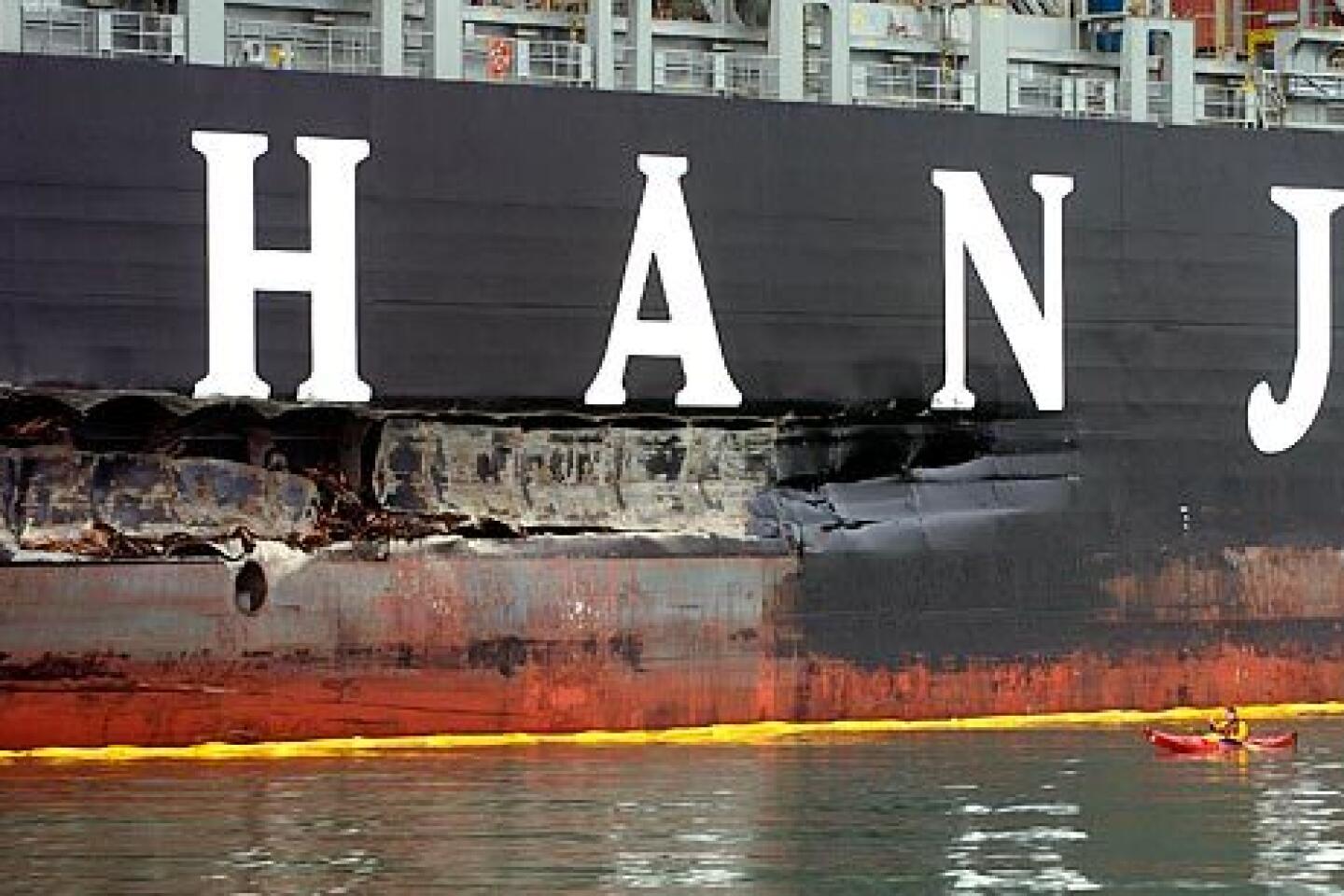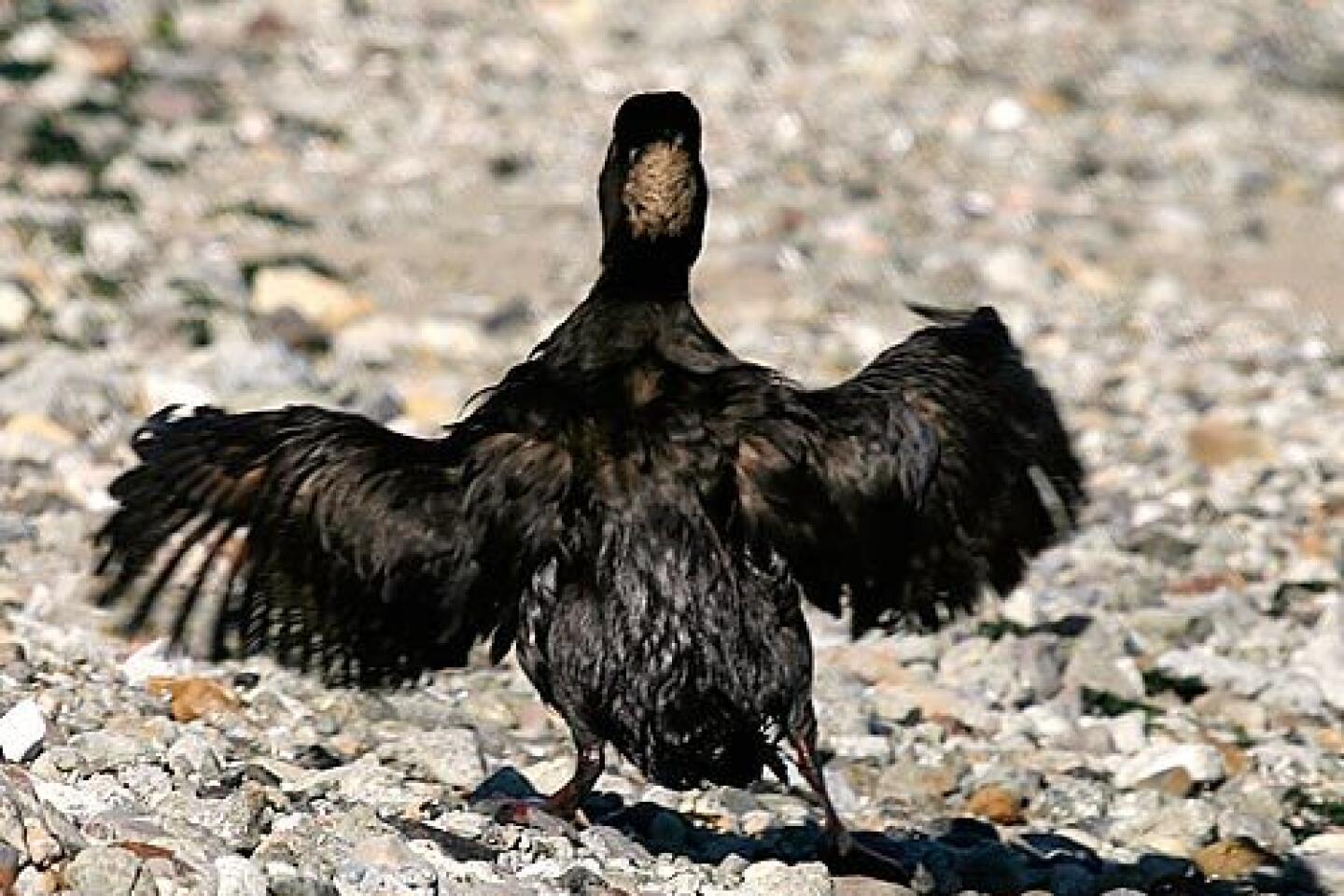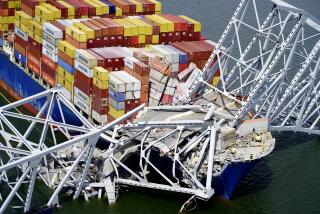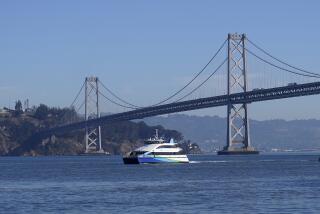Coast Guard deflects blame in Bay Area spill
- Share via
SAN FRANCISCO — The Coast Guard said Friday that its radar systems could not have clearly shown that a cargo ship was about to collide into the San Francisco-Oakland Bay Bridge and spill oil into the San Francisco Bay.
The comments by Coast Guard spokesman Capt. Jim McPherson came as the agency sought to deflect responsibility for last week’s collision back to the vessel’s pilot and captain.
On Thursday, The National Transportation Safety Board said the Coast Guard said nothing to the Cosco Busan in the moments before it hit the bridge and poured 58,000 gallons of fuel into the Bay. That silence by the Coast Guard was confirmed Friday by an Associated Press review of transmissions between the Coast Guard Vessel Traffic Service and the ship’s pilot.
According to McPherson, radar at the VTS operates on a 12-mile scale and does not have the level of detail to show the protective fenders on the bridge supports like the one the Cosco Busan rammed into.
“The resolution on the radar is such that you can’t tell with certainty it’s going to occur,” McPherson told The Associated Press.
“We had no way of knowing, on the type of scale it is,” he said.
“The VTS won’t have any confirmation that a vessel hasn’t hit one of the support structures until it clears the bridge,” McPherson said, adding that the location of fixed objects is clearly marked on a pilot’s navigational charts. The role of the VTS is to keep moving vessels from colliding and to provide advisory information, he said.
John Meadows, a lawyer for the pilot, disputed McPherson’s characterization of the radar. “A properly functioning radar shows not only the towers, but it will also show the piers and the buoys on either side of the piers,” Meadows said. “The VTS should have had access to that. Any good, working radar would show these things.”
An official with knowledge of the investigation said that an initial federal review of communications between the Coast Guard’s Vessel Traffic Service and the pilot showed that beginning at 8:29 a.m. on Nov. 7, the VTS contacted the Cosco Busan pilot, questioning whether the ship was off-course. The official spoke about the communications on condition of anonymity because of the ongoing investigation.
The communications were broadcast between the VTS and the ship’s bridge on public airwaves meant to be heard by other vessels in the area.
It was a foggy morning and visibility was very poor.
“Roger, captain, are you still proceeding out?” Vessel Traffic Service says at 8:29 a.m., according to a review of the audio.
“Traffic?” responds the pilot, acknowledging the communication.
“AIS shows you on 235 heading. What are your intentions? Over,” VTS asks. AIS is the Automatic Identification System, a shipboard tracking system.
“Um, I’m coming around. I’m steering 280 right now,” the pilot says, indicating he was shifting the rudder as he made a turn.
“Roger, understand you’re still intending the Delta-Echo span, over,” VTS says, referring to the opening under the bridge between bridge supports labeled Delta and Echo.
“Yeah, we’re still Delta-Echo,” says the pilot.
“Uh, roger captain,” VTS says at 8:30.
At 8:32 the collision has occurred, and the pilot says: “Traffic, we just touched the Delta span. I’m gonna go to trying to get our anchor. Anchorage 9 ... Anchorage 7,” the pilot says, suggesting some confusion about where he was.
“Roger, unit Romeo at the Delta-Echo span, diverting to Anchorage 7,” the Coast Guard acknowledges. Evidently the name Romeo was assigned to the Cosco Busan.
VTS then proceeds to alert other ships in the area of the situation.
McPherson said it wasn’t the agency’s role to put the ship on a different course.
“We provide advisory assistance, but the captain and the pilot of the vessel are at all times in control of the vessel,” McPherson said.
He said VTS is not like air traffic control, when “you’re taking direct control of that aircraft. ... It’s a really important distinction.”
Asked about McPherson’s comment, Michael Hansen, a spokesman for ship owner Regal Stone Ltd., said: “The master and pilot make the decisions. At this point I’d have to agree with the Coast Guard. They were working under procedures and regulations in place at the time.”
Meadows said that when he was the attorney in charge of the U.S. Department of Justice’s Admiralty and Shipping Section in San Francisco, he surveyed a facility similar to the VTS after a collision between two tankers in the early 1970s.
He recalled a radar observer at the time telling him that his instructions were “to provide meaningful information.”
“I believe that’s still the standard, I’m not sure,” Meadows said. “I’d think it would be at least that.”
Regardless, Meadows said, “It would have been very helpful if (VTS) had done more” to warn the Cosco Busan. “They might have prevented a collision. ... Look at this spill.”
------
